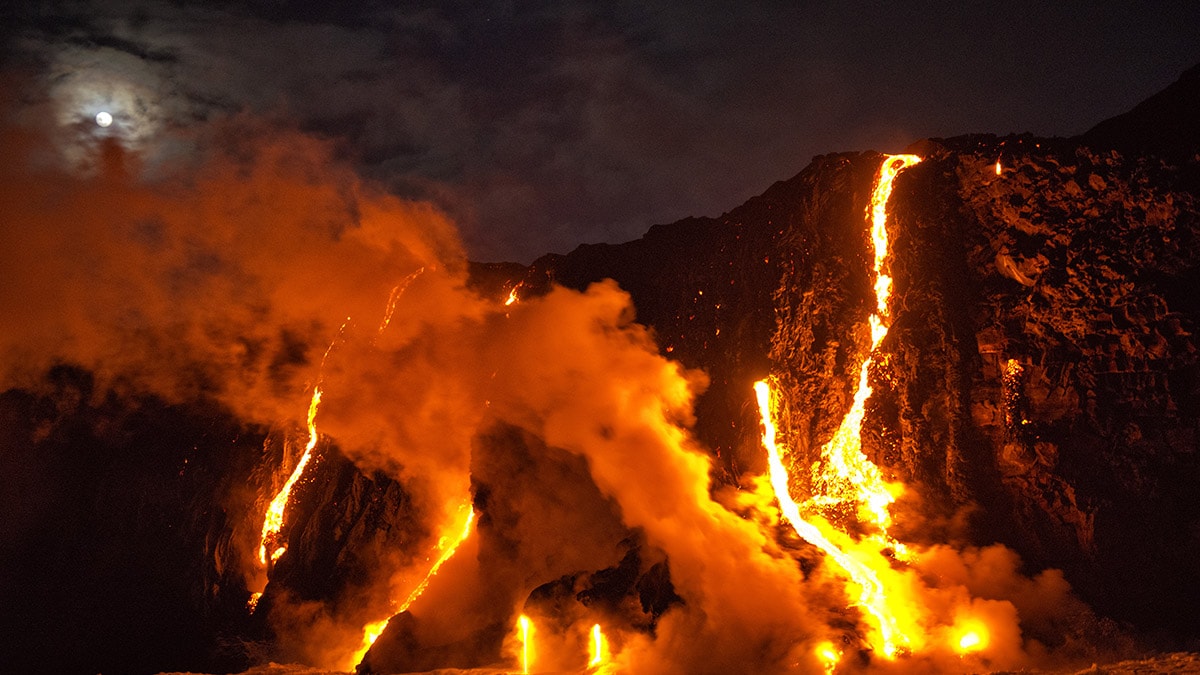Key points
- You can do many things to protect yourself and your family from the dangers a volcanic eruption can cause.
- The best way to do protect yourself and your family is to follow the advice of local officials.
Stay safe during a volcanic eruption

You can do many things to protect yourself and your family from the dangers a volcanic eruption can cause. The best way to do protect yourself and your family is to follow the advice of local officials. Local authorities will provide you with information on how to prepare for a volcanic eruption, and if necessary, on how to evacuate (leave the area) or take shelter where you are.
Leave the area if a lava flow or other flow is headed toward you.
- Leave the area immediately if a lava, lahar, or pyroclastic flow is headed toward you.
- If you are warned to evacuate because an eruption is imminent, evacuate.
- If you can drive rather than walk, use your vehicle to evacuate. When driving keep doors and windows closed, drive across the path of danger if you can or away from the danger if you cannot. Watch for unusual hazards in the road.
Stay safe indoors.
- Close all windows, doors, and fireplace or woodstove dampers.
- Turn off all fans and heating and air conditioning systems.
- Bring pets and livestock into closed shelters.
If you are outside, seek shelter indoors.
- If caught in a rockfall, roll into a ball to protect your head.
- If near a stream or river, be aware of rising water and possible mudflows in low-lying areas. Move up-slope as quickly as possible.
- Seek care for burns right away. Immediate care can be life saving.
- If your eyes, nose, and throat become irritated from volcanic gases and fumes, move away from the area immediately. Your symptoms should go away when you are no longer in contact with the gases or fumes. If the symptoms continue, consult your doctor.
Protect yourself from ash.
Protect your health from ash.
- Stay inside, if possible, with windows and doors closed.
- Wear long-sleeved shirts and long pants.
- Use goggles to protect your eyes.
- Listen to authorities for advice on leaving the area when ashfall lasts more than a few hours. If ash is continually falling, you may not be able to shelter indoors for more than a few hours, because the weight of the ash could collapse the roof of your building and block air intakes into the building.
Wear a respirator to protect your lungs from ash.
Exposure to ash can harm your health, particularly your ability to breathe well.
- Wear a NIOSH Approved N95 respirator (also known as an "air purifying respirator") to protect yourself while you are outdoors or while you are cleaning up ash that has gotten indoors.
- If you don't have a NIOSH Approved N95 respirator, you can protect yourself by using a nuisance dust mask as a last resort, but you should stay outdoors for only short periods while dust is falling. Nuisance dust masks can provide comfort and relief from exposure to relatively non-hazardous contaminants such as pollen, but they do not offer as much protection as a particulate respirator. Note that disposable particulate respirators do not filter toxic gases and vapors.
Tip
Avoid driving in heavy ashfall.
- Keep your car or truck engine switched off. Driving will stir up ash that can clog engines and stall vehicles.
- If you do have to drive, keep the car windows up and do not operate the air conditioning system. Operating the air conditioning system will bring in outside air and ash.
Resources
- Natural Disasters and Severe Weather
- American Red Cross: Volcano
- Federal Emergency Management Agency: Volcanoes: Are You Ready?
- Hawaii Emergency Management Agency: Hawaii Emergency Management Agency Information on 2018 Kilauea Eruptionexternal icon
- Mt. St. Helens
- U.S. Geological Survey
- Washington State Department of Health: Volcanoes (also available in Spanish)
